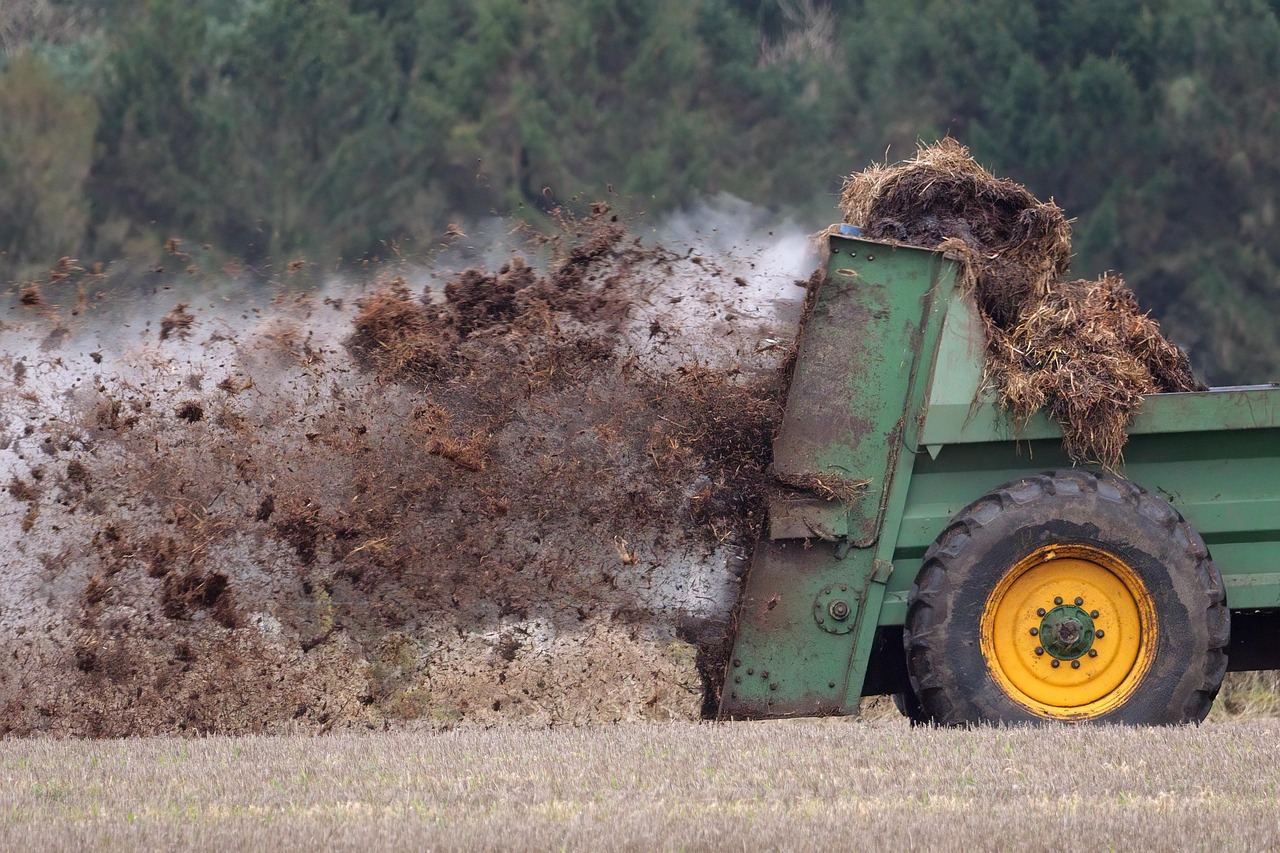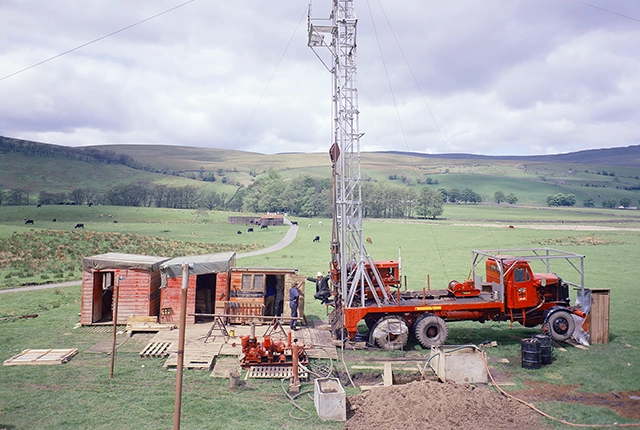Groundwater is vulnerable to pollutants that leach from the land surface. This ‘diffuse’ pollution comes from non-point source, widespread activities within the current and past agricultural and urban environments. There is also a contribution from atmospheric deposition.

Diffuse pollution can leach from the land surface into groundwater from non-point sources such as crop spraying. BGS © UKRI.
Rural sources of diffuse pollution
Rural diffuse pollution arises from land-use activities spread across large areas, such as:
- fertilisers and pesticides used in the cultivation of land to grow crops
- livestock grazing with associated manure and slurry storage and disposal
- sewage sludge disposal
- forestry operations
Dispersed housing may also be a source.

The pollutants of concern include:
- nutrients such as nitrogen (typically in the form of nitrate) and phosphorus
- pesticides
- biodegradable substances
- ammonia
- micro-organisms, such as faecal coliforms
Urban sources of diffuse pollution
In urban areas, both industrial and municipal activities generate pollutants. Urbanisation changes the natural pattern of recharge to groundwater with run-off from built areas and impervious surfaces, such as roads and car parks. There is also input from mains water, leaking sewers and pluvial drains.
Infiltration may carry a mix of polluting substances, such as:
- toxic metals
- pesticides
- oils and hydrocarbons
- sediments
- oxygen-depleting substances
Emerging contaminants
Recently, advancing analytical techniques have identified a range of widespread emerging contaminants in groundwater, including:
- pesticide breakdown products
- pharmaceuticals
- food additives
- industrial compounds
- caffeine
- nicotine
Further reading
Morris, B, and Cunningham, J. 2008. Suburbanisation of important aquifers in England and Wales: estimating its current extent. Water and Environment Journal, Vol. 22(2), 88–99. DOI: https://doi.org/10.1111/j.1747-6593.2007.00082.x
Morris, B L, Darling, W G, Cronin, A A, Rueedi, J, Whitehead, E J, and Gooddy, D C. 2006. Assessing the impact of modern recharge on a sandstone aquifer beneath a suburb of Doncaster, UK. Hydrogeology Journal, Vol. 14 (6), 979–997. DOI: https://doi.org/10.1007/s10040-006-0028-1
Rueedi, J, Cronin, A A, and Morris, B. 2009. Estimation of sewer leakage to urban groundwater using depth-specific hydrochemistry. Water and Environment Journal, Vol. 23(2), 134–144. DOI: https://doi.org/10.1111/j.1747-6593.2008.00119.x
Contact
Please contact Dan Lapworth for further information.
Our research

Nitrate contamination of groundwater
Contamination of groundwater by nitrate is increasing and BGS is investigating the cause.

Emerging contaminants in groundwater
Improvements in analysis mean that more organic compounds are being detected in groundwater.

